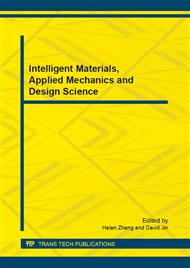p.193
p.197
p.201
p.205
p.209
p.213
p.217
p.221
p.225
Al Doped LiMn2O4 Prepared by a Solution Combustion Synthesis Using Acetate Salts as Raw Materials and Acetic Acid as Fuel
Abstract:
To improve the cyclability of spinel LiMn2O4, Al3+ doped LiAlxMn2−xO4 (x=0, 0.01, 0.05 and 0.10) materials are prepared using a solution combustion synthesis method using acetic salts as raw materials and acetic acid as fuel. Their phase structures are characterized by X-ray diffraction (XRD). Electrochemical performances of the materials are investigated by galvanostatic charge/discharge methods. XRD results reveal that the purity of the samples increases with increasing Al3+ content. Electrochemical experiments demonstrate that the charge/discharge cyclability of the LiAlxMn2-xO4 increases with increasing Al3+ content. Compared with the pristine LiMn2O4, the Al-doped LiAlxMn1−xO4 show the obviously improved cyclability, especially for the sample LiAl0.1Mn1.9O4.
Info:
Periodical:
Pages:
209-212
Citation:
Online since:
November 2011
Authors:
Price:
Сopyright:
© 2012 Trans Tech Publications Ltd. All Rights Reserved
Share:
Citation:


